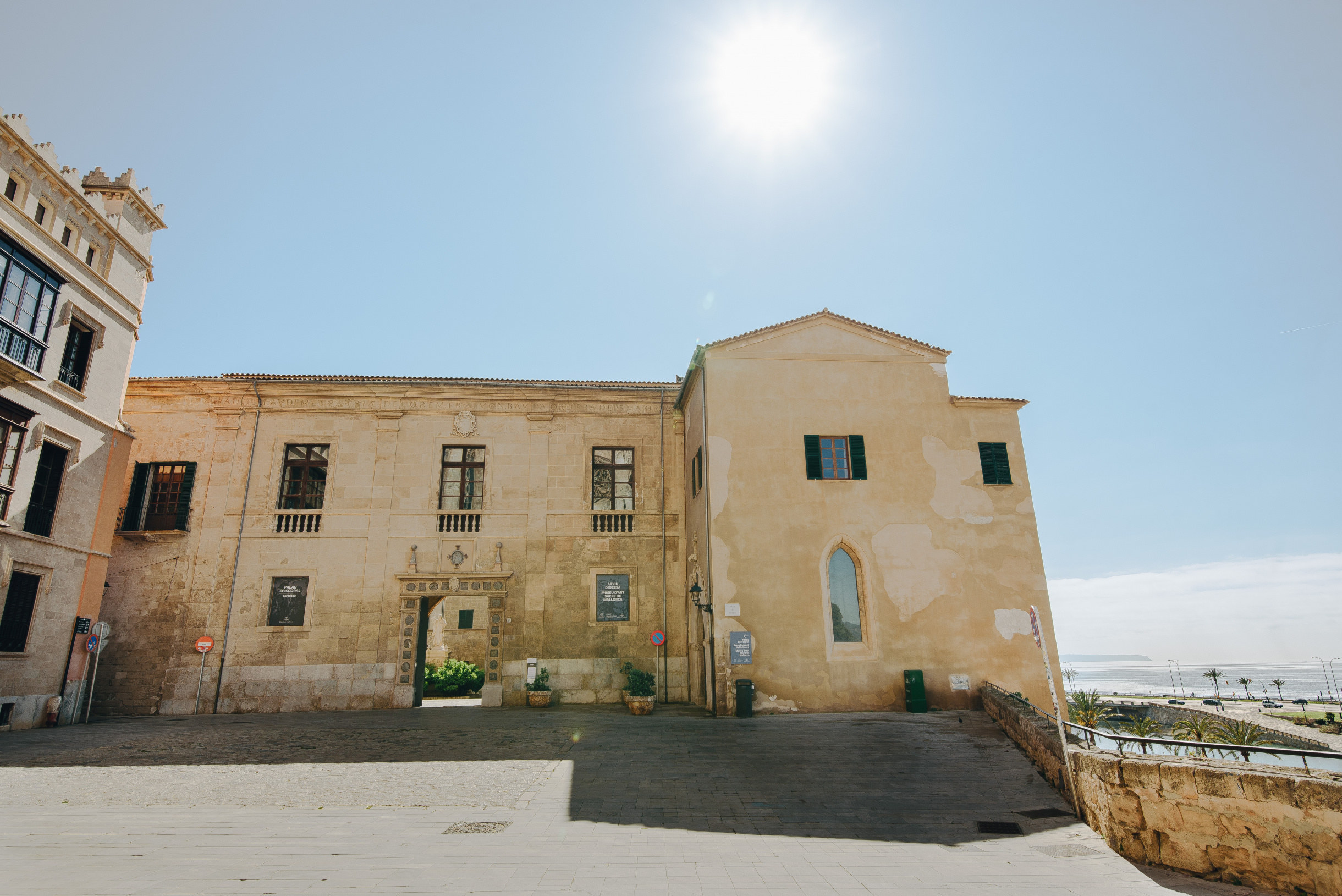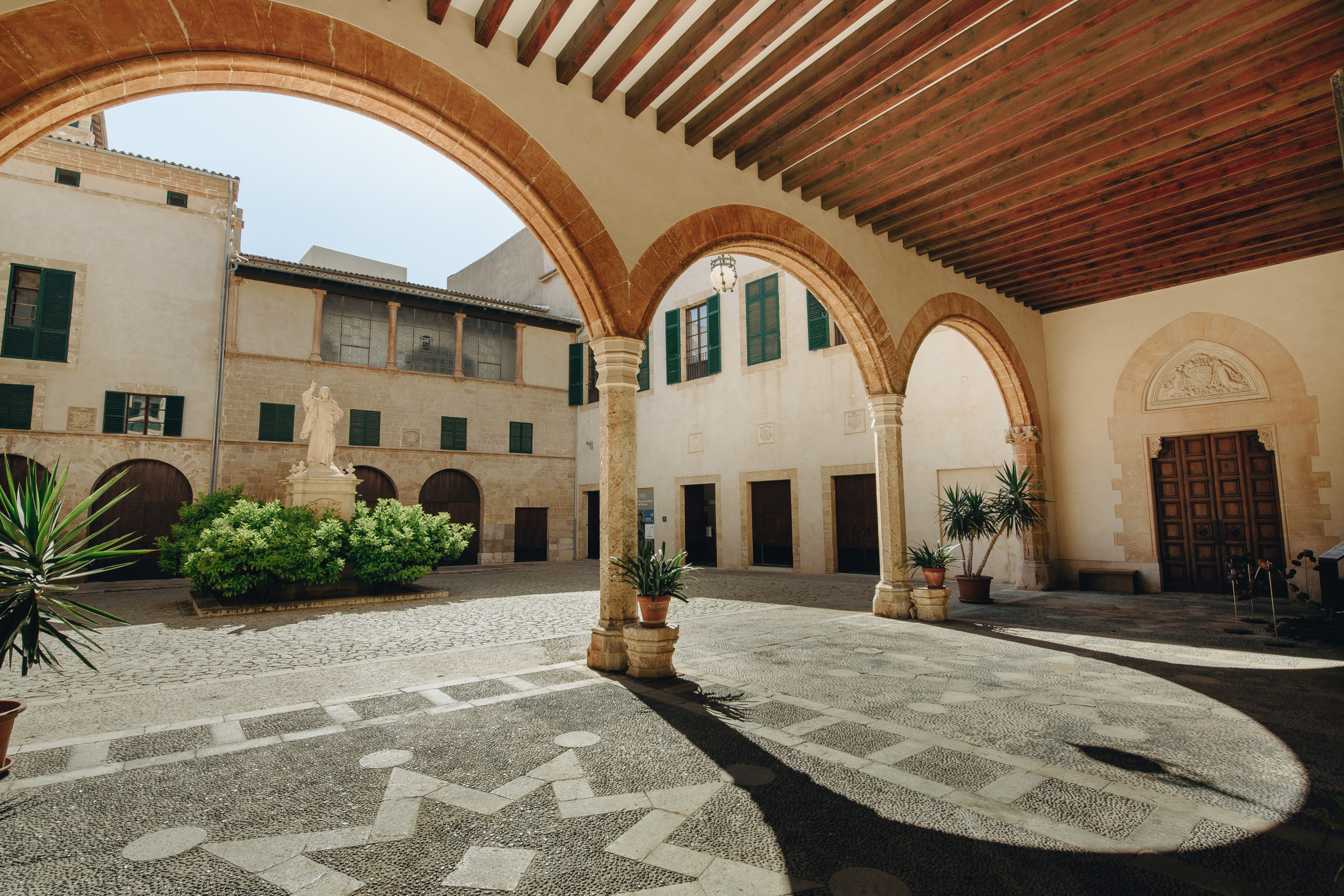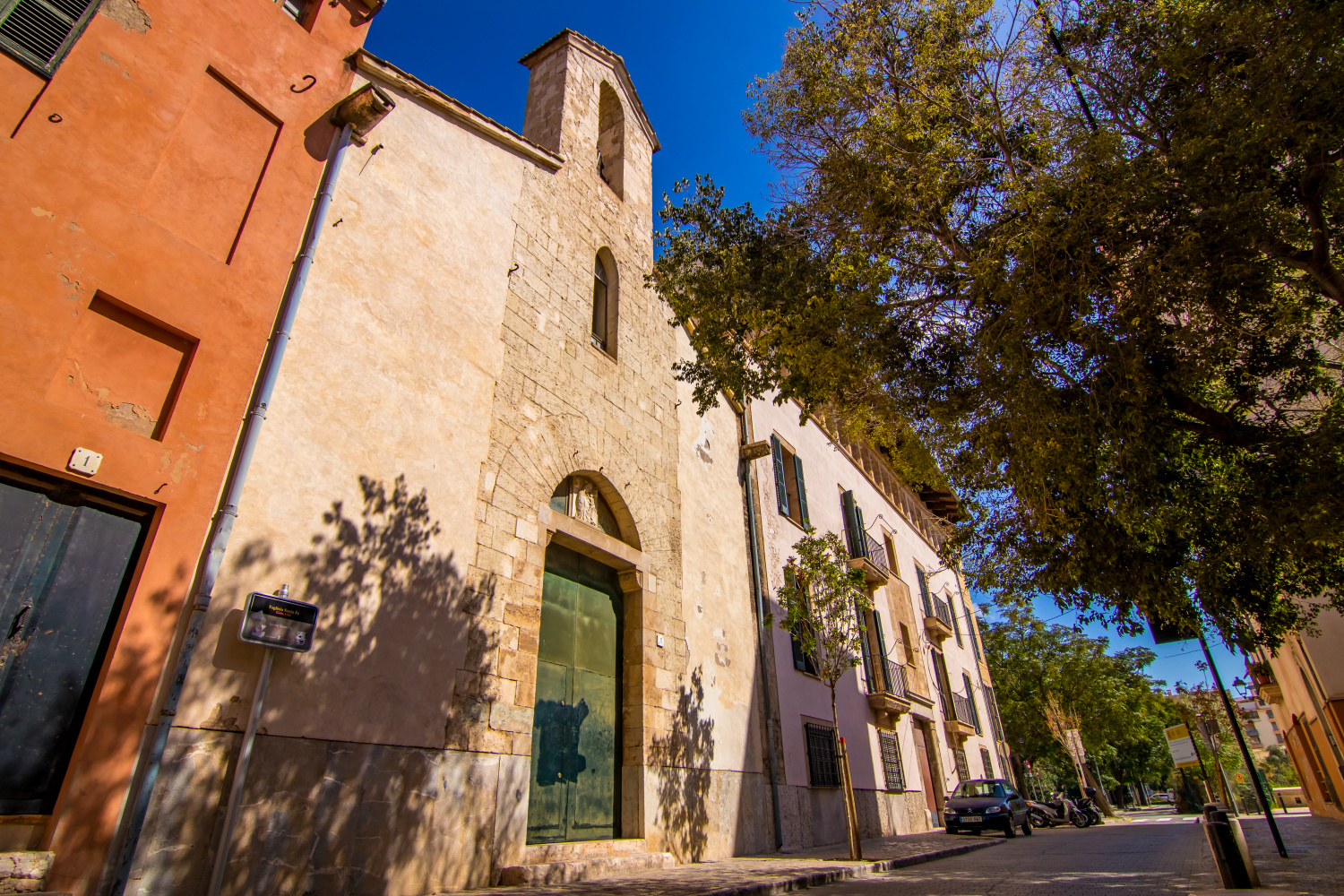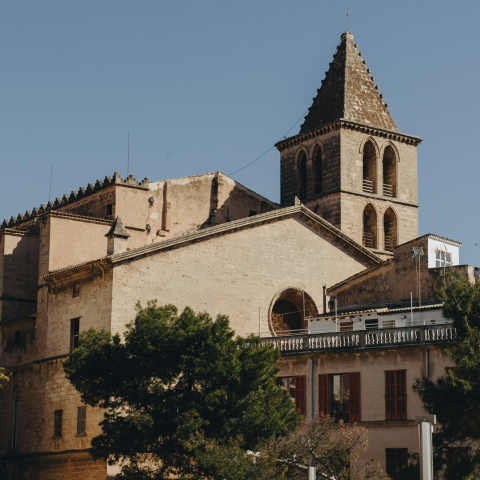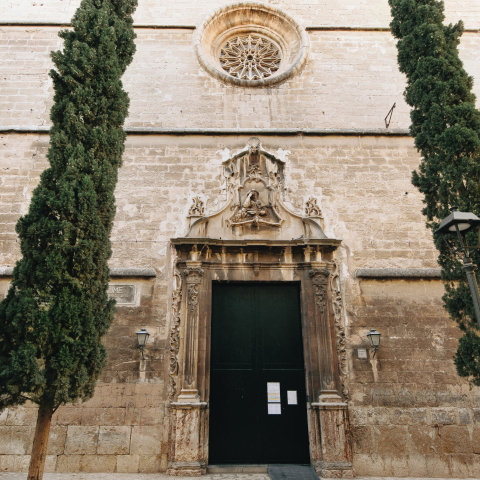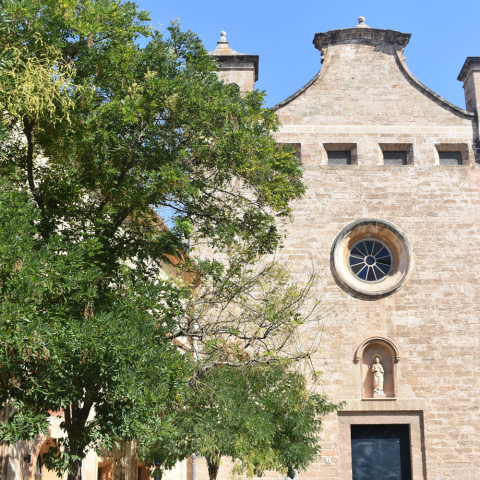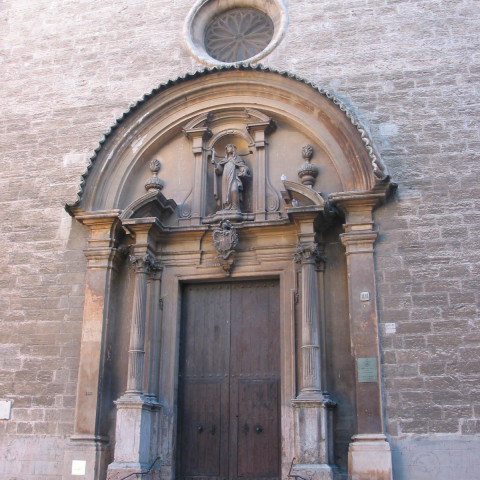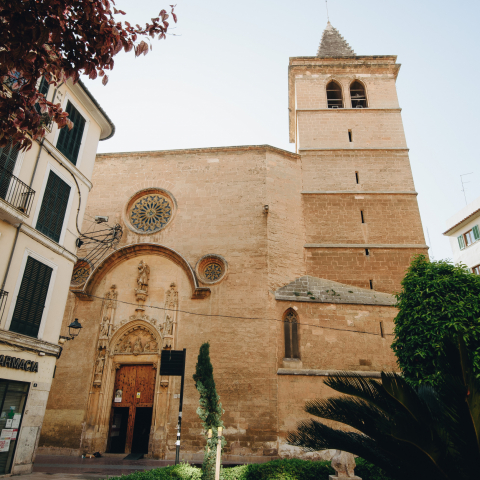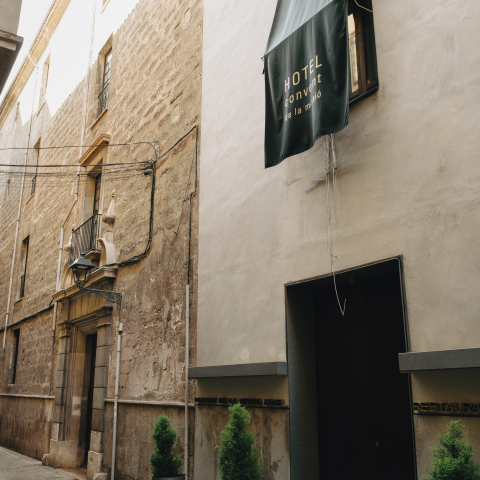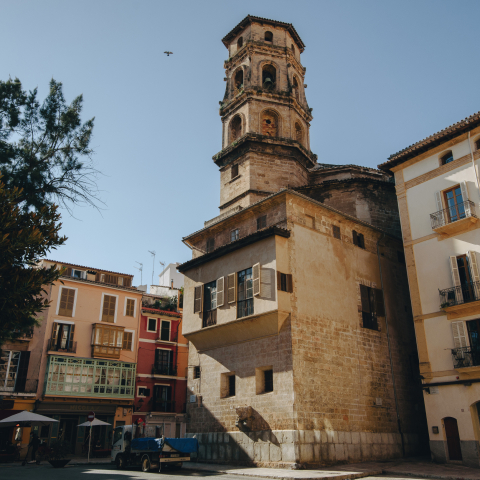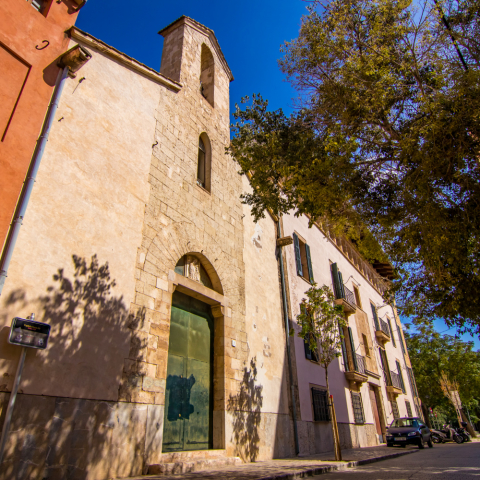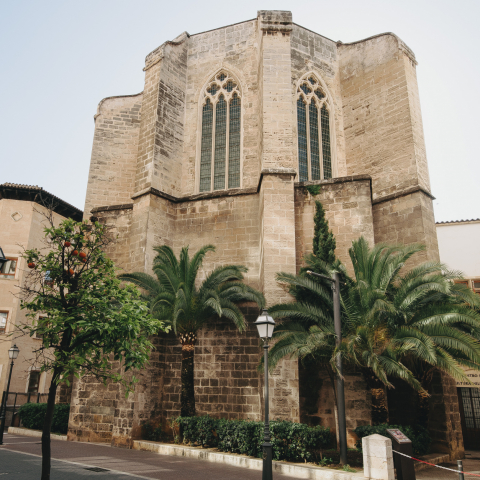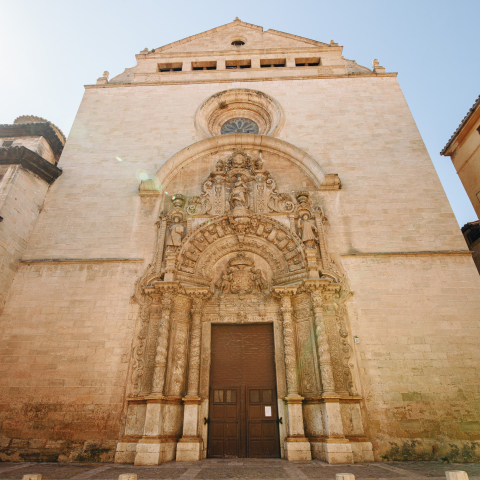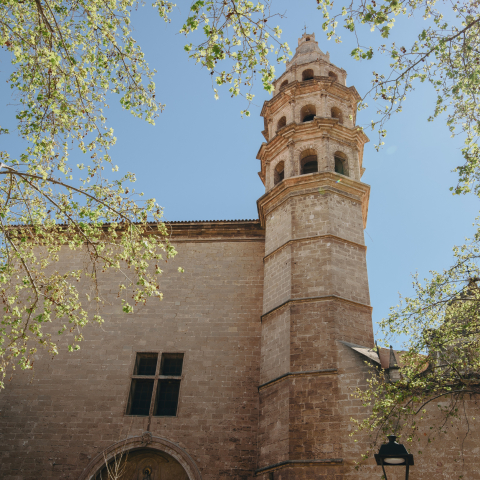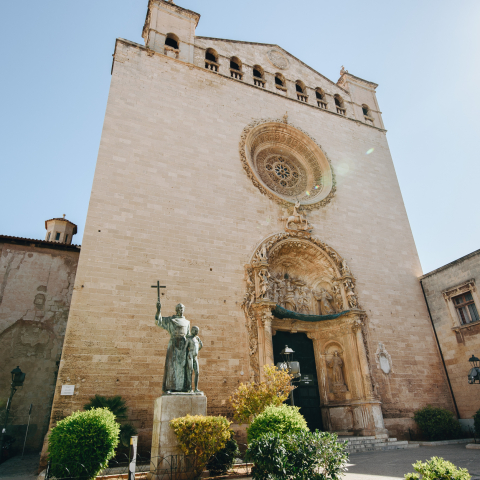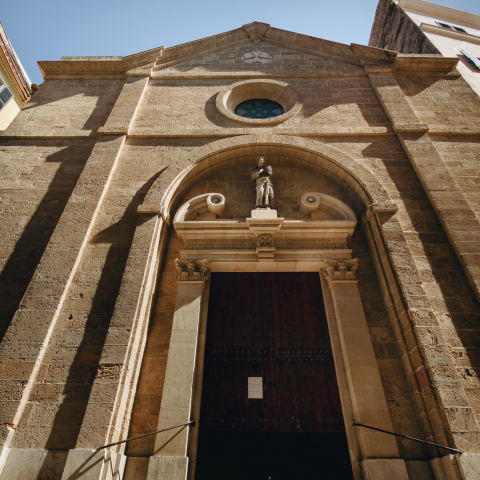The stunning legacy of religious art in Palma
Palma is a city with a rich and mixed heritage thanks to the legacy left behind by three universal cultures: the Moors, the Romans and the Christians. The latter in particular left a vast array of heritage and a magnificent legacy that stretches far beyond that of Palma Cathedral. A legacy in the form of churches and monasteries worth exploring.
These places of worship house a variety of artistic reproductions of religious art where everything worshipped, sacred and divine is embodied in paintings and sculptures. This prolific collection is a clear example of the importance of the Catholic church in Mallorcan society.
We begin our tour in the Iglesia de San Juan de Malta (Saint John of Malta) church (1), an ancient Baroque style chapel from the Order of Saint John of Malta. We then go up to the Plaça de la Drassana and from there head towards Carrer de Sant Llorenç, where we find the Iglesia de la Santa Cruz (Holy Cross) church (2), located between Carrer de la Santa Creu and Carrer de Sant Llorenç. This is a Gothic style building with a Baroque style main altar. It forms part of the Santa Creu (Holy Cross) monumental complex, consisting of the parish church, the San Lorenzo (Saint Lorenzo) chapel and a permanent room for religious art. We now go down the symbolic Carrer de Jaume III to the Carrer de Sant Jaume, where we find the Iglesia de Sant Jaume (Saint James) church (3), founded under the protection of the crown of Mallorca, in the name of James I and his son James II. Inside are two important relics of Baroque art: the canvases in the chapel of Santo Cristo (Saint Christ) by Miquel Pons Cantallops, and the San Cayetano (Saint Cajetan) altarpiece. We can also find the Iglesia de Santa Margalida (Saint Margaret) church (4) in the same street, a former monastery for Augustinian monks, built in 1238. The monastery was practically dismantled for use as a military hospital. Now, part of the cloister and the chapter house remain. We now go down Carrer de Santa Magdalena, where we will find the Iglesia de Santa Magdalena (Saint Mary Magdalene) church (5), an essential stop for sampling art from the great Mallorcan Gothic artists. The oldest and most important work is the altarpiece dedicated to Saint Mary Magdalene. And if the religious art (not to mention the walk) has made you hungry, you can try some fantastic artisan sweets here…
If you are in the Iglesia Santa Magdalena (Saint Mary Magdelene) church, it is worth seeing the Blood of Christ (6) image, the most worshipped image in Palma. We will now go back and continue our route through the Plaça Rei Joan Carles I heading towards the Ramblas and from there we go to the Purísima Concepción (Immaculate Conception) monastery of the Capuchin monks (7), which has valuable historical, artistic and ethnographic heritage. And if you are lucky enough to visit during the Christmas period, you will be able to try some of its delicious home-made sweets dispensed through a turnstile window. We now go back to Las Ramblas and up the hill of Sa Pols, which takes us to the Iglesia de Sant Miquel (Saint Michael’s) church (8), built on the site where the main mosque of the city of Madina Mayurqa was located. This parish church is also a shrine to Our Lady of Good Health, the patron saint of Palma, revered by Mallorcans. Near Saint Michael’s church we find the Convent de la Missió (9), a former monastery from the 17th century now converted into a hotel, and next to it is the Iglesia de la Missió church, which is still open for service. Now we head in a different direction, going towards Plaça del Mercat and then the Iglesia de Sant Nicolás (Saint Nicholas) church (10), a magnificent example of Gothic and Baroque styles coexisting. We continue our route along Carrer de Miquel and Carrer de Colón until arriving in Plaça del Ajuntament. Behind the square we find the Iglesia de Santa Eulalia (Saint Eualalia) church (11). Inside we can see the Christ the Conqueror, probably donated by James I to what was the biggest church in Palma in the 13th century. We continue our route to the San Francisco (Saint Francis) monastery (12), noted for its cloister, declared a national monument, and known for being one of the most beautiful and best-preserved architectural complexes in Palma. We can now go towards the Nuestra Señora del Socorro (Our Lady of Perpetual Help) church (13), belonging to the order of Augustinian monks, with the monumental chapel of Saint Nicholas of Tolentino which was designed by the sculptor Francisco Herrera. From there we can go down Carrer Mateu Enric Lladó and head towards the Iglesia de la Santa Fe (Saint Faith) church (14), with a Gothic façade, it was the old parish of the tanners. Our route continues to the Plaça de Sant Jeroni and Carrer del Seminari to the Iglesia de Montesión (Mount Zion) church (15), a true gem located in Carrer del Vent. Its façade is its most famous and symbolic feature. From Carrer del Vent we will head down Carrer de Sant Alonso until we get to Carrer Can Fonollar, which will take us to the Convento de Santa Clara monastery (16), one of the best examples of medieval art in Palma, where artisan sweets are also made. True delicacies of Palma, these sweets are an ideal way to end your tour of the city’s religious art.

